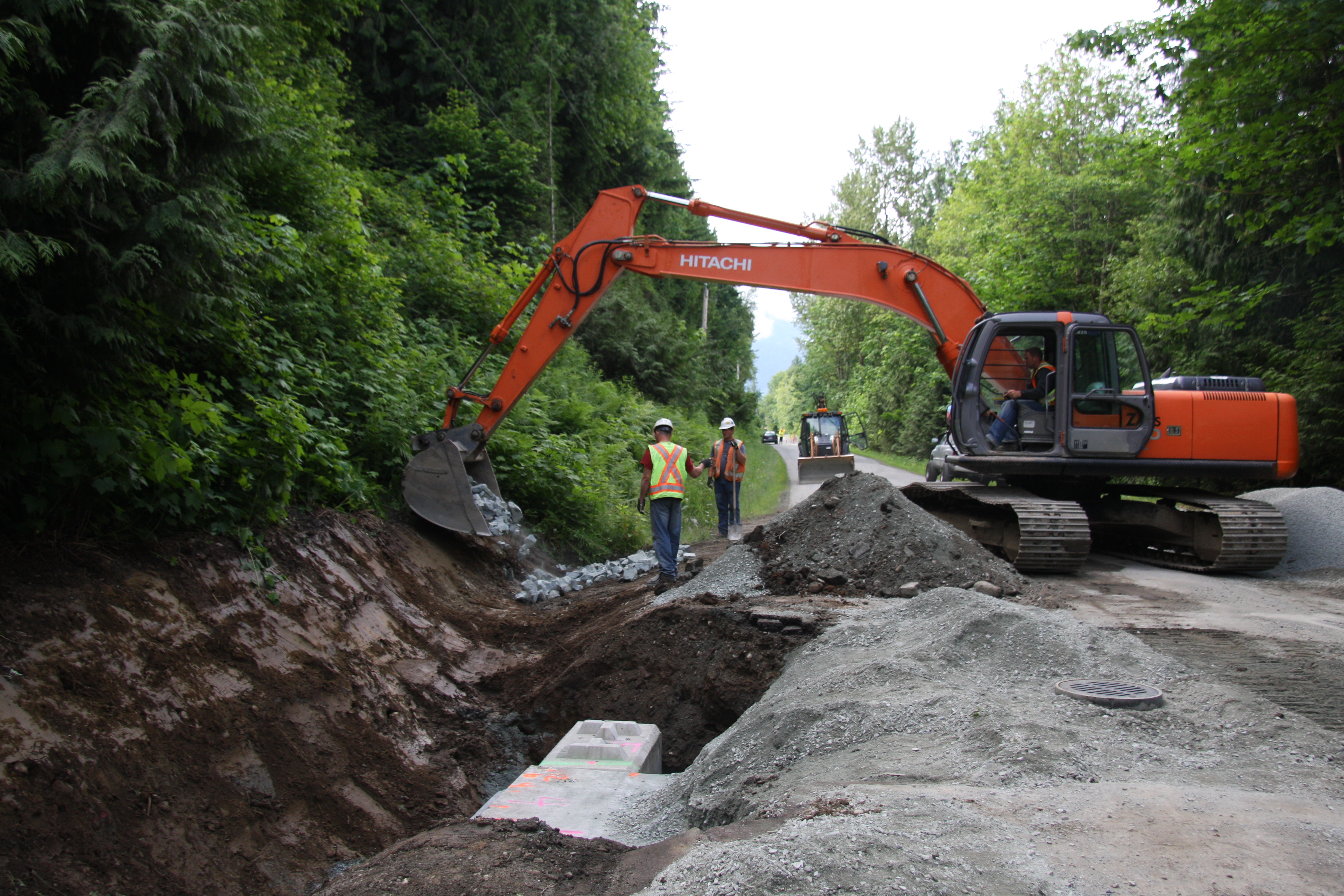High Quality Road Construction for Long-Lasting Roads
Wiki Article
Culvert Installation Facilitated: Step-by-Step Overview for Success
Mounting culverts might appear like an uncomplicated task, but ensuring an effective end result requires careful preparation and implementation. From choosing the suitable culvert size to integrating correct water drainage procedures, each action in the installation procedure plays a critical function in the capability and durability of the culvert system. By following a systematic technique and taking notice of key information, the setup can proceed efficiently, reducing potential problems down the line. Stay tuned to discover the essential actions and considerations that can make culvert installment a seamless and effective venture.Picking the Right Culvert Size
Choosing the ideal culvert size is crucial for guaranteeing effective water circulation and architectural stability in culvert installment jobs - Pad Construction. The dimension of the culvert directly influences the circulation capacity of water via the structure. A culvert that is also small can result in flooding and overflow, while one that is also big might lead to decreased water rate, possibly creating debris build-up and blockagesTo determine the best culvert size, elements such as the watershed location, optimal circulation rates, and hydraulic performance need to be meticulously considered. Estimations based upon these specifications aid in choosing a size that can sufficiently deal with the predicted water quantity while minimizing the threat of obstructions and architectural failure.
It is important to speak with engineering guidelines and requirements to make sure that the picked culvert dimension satisfies the project needs and neighborhood laws (Pad Construction). By picking the right culvert dimension, project supervisors can enhance water flow, avoid prospective problems, and improve the general performance and long life of the culvert setup
Preparing the Installation Website
Efficient culvert installation necessitates meticulous prep work of the installment site to guarantee optimal structural assistance and performance. Prior to commencing the installment process, it is critical to clear the website of any particles, greenery, or obstructions that could impede the culvert's placement. Ensuring a degree foundation is vital for the correct alignment and stability of the culvert. This may entail rating the site to produce a smooth, even surface that can sufficiently support the weight of the culvert and any type of awaited loads. Additionally, proper compaction of the soil underneath the culvert is necessary to stop clearing up or changing with time.Furthermore, it is important to consider variables such as dirt make-up, groundwater degrees, and environmental impacts when preparing the installation site. Carrying out a detailed site evaluation can assist recognize any type of potential challenges or threats that might affect the culvert's efficiency. By putting in the time to prepare the installation website correctly, you can help guarantee an effective culvert setup that fulfills architectural demands and guarantees long-term capability.
Putting the Culvert Appropriately

The quality at which the culvert is put is critical for preserving an appropriate slope for water circulation. A steady slope assists prevent pooling and promotes effective drain. Additionally, the culvert needs to be oriented appropriately to make certain that the inlet and electrical outlet are in the correct locations. This orientation is essential for the culvert to function efficiently in handling water Culvert installation flow.
Backfilling and Compacting the Dirt
Proper backfilling and compaction of the dirt around the culvert is vital to make sure security and protect against prospective concerns in the future. Once the culvert is appropriately positioned, the following crucial action is to backfill the area around it with ideal material. The backfill product should be without rocks, debris, and raw material to stay clear of damage to the culvert. It is suggested to make use of granular material such as sand or crushed rock for backfilling, as it provides excellent water drainage and compaction residential or commercial properties.After putting the backfill material, it is very important to small it in layers of uniform density. Making use of a compactor or a mechanical tamper, small the dirt delicately to avoid damaging the culvert. Compaction assists in minimizing the possibilities of negotiation and makes sure uniform support around the culvert. It is important to portable the dirt uniformly on all sides of the culvert to preserve its structural honesty.
Proper backfilling and compaction not just provide security to the culvert yet likewise assist in protecting against soil disintegration and preserving the longevity of the culvert system.
Making Sure Correct Drainage Integration
Integrating effective drainage solutions plays a crucial function in the total functionality and durability of culvert installments. Proper drainage assimilation is necessary for managing water flow, stopping disintegration, and ensuring the structural honesty of the culvert system. To accomplish this, it is important to develop a comprehensive drainage strategy that thinks about elements such as the volume of water anticipated, the topography of the location, and the type of dirt existing.
Furthermore, including attributes like erosion control procedures, such as riprap or vegetation, can even more boost the efficiency of the drain system. By carefully planning and implementing these drainage services, culvert installations can function efficiently and endure the examination of time.
Conclusion
Finally, proper culvert installation is vital for keeping efficient drain systems. By choosing the appropriate culvert size, preparing the setup website, positioning the culvert appropriately, backfilling and compacting the soil, and making sure correct drain combination, success can be accomplished. Following these actions will certainly assist guarantee the longevity and effectiveness of the culvert, ultimately adding to the general success of the water drainage system.Report this wiki page